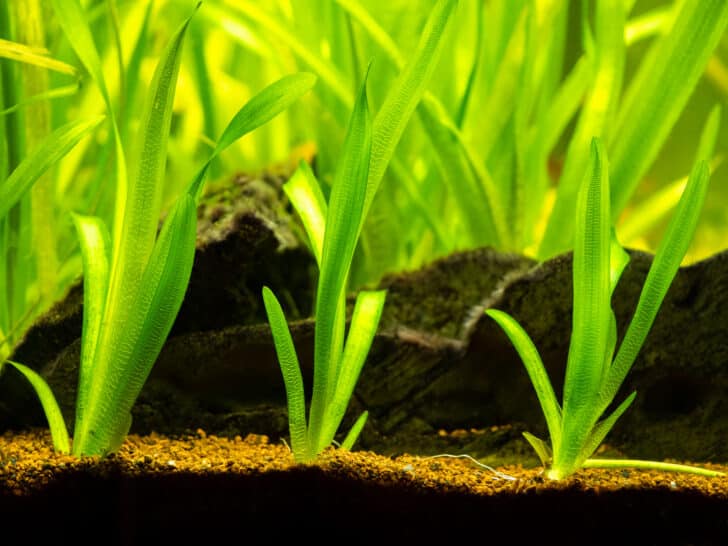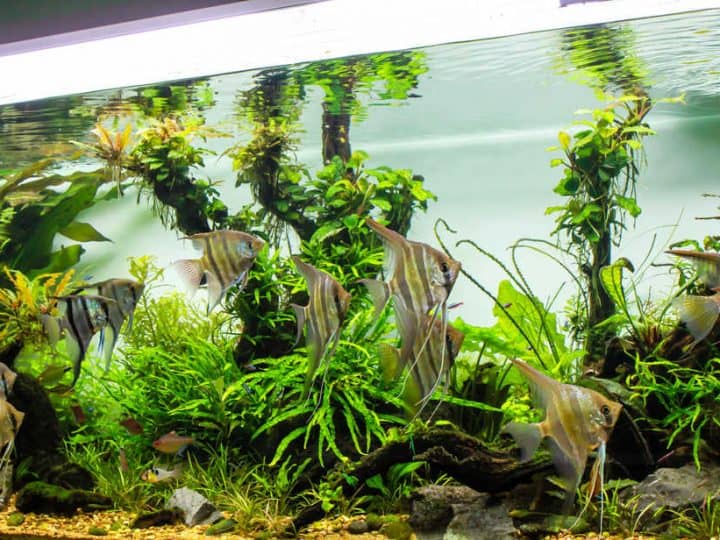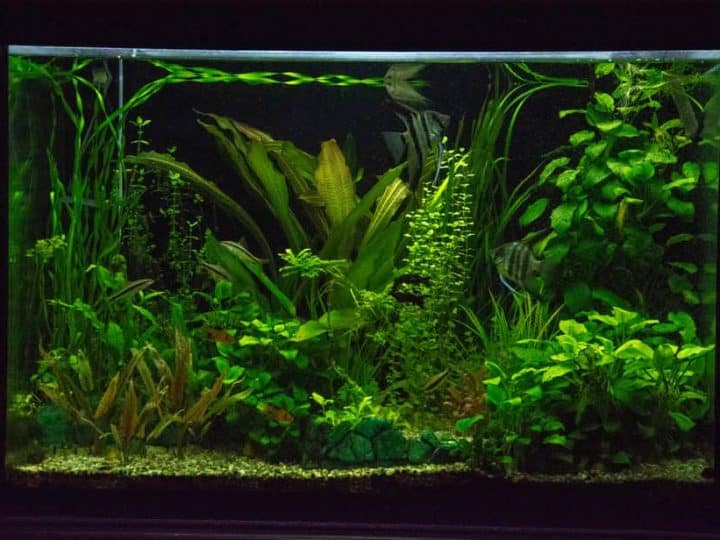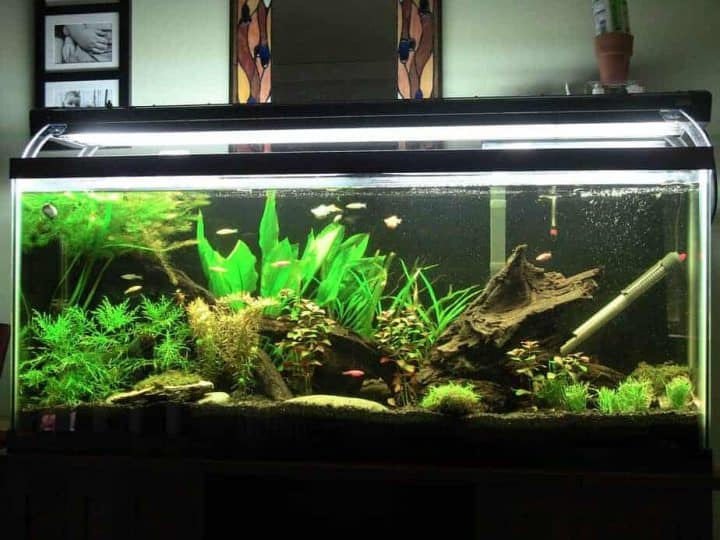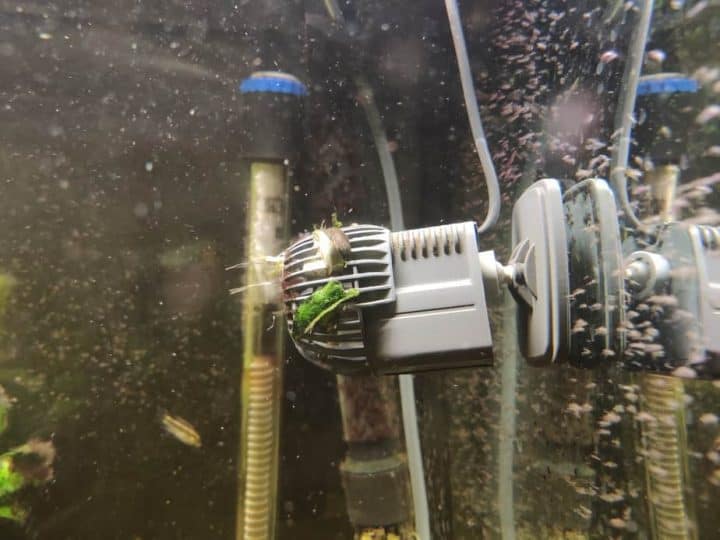Aquatic plants are an essential part of any aquarium since they help turn a tank into a functioning ecosystem. Still, aquarium plants, like all other plants, need the right amount of light, fertilizer, nutrients, water alkalinity, and temperature to grow healthily and quickly.
Quick Answer
Your aquarium’s aquatic plants should root within 2 weeks of planting them, and they’ll start to grow within 2 months. This is true so long as the conditions in your aquarium, including lighting, nutrients, and carbon dioxide, are supporting healthy vegetation.
I’ll tell you everything you need to know to help your aquarium plants grow faster and stay healthy for longer. Also, I’ll share some of the best ways to speed up plant growth so that you can grow your planted tank like a pro. Let’s get started!
How Long Does It Take for Aquatic Plants To Grow?
Aquatic plants grow faster if they have everything they need. If they don’t get enough light and nutrients or get too much of them, they might not grow as quickly as possible.
Aquatic plants usually only take 2 months to grow and flourish in your aquarium as long as they get their basics met, such as proper lighting, nutritional, substrate, and water conditions. When planted from seed, it only takes around 2 weeks for aquatic plants to form roots.
Once your plants start to root, they’ll develop leaves, and provided that they have the right amount of light, they can quickly take over your tank, turning it into a vibrant aquascape. However, if you don’t create the right environment for your specific type of plant, you could stunt its growth and potentially kill it. Keep reading to learn more.
Types of Aquarium Plants
Not all aquarium plants are created equal, and each plant type needs specific things to grow. Knowing what your plant needs is crucial if you want to speed up the rooting and sprouting process.
Here are the classes of aquatic plants and some popular examples of each one:
- Floating plants. Plants such as duckweed, water lettuce, and water-velvet prefer to grow on the water’s surface, and they occasionally have small roots. They need full to partial sunlight and don’t need a substrate to grow.
- Rooted floating plants. Water lilies, American pondweed, hornwort, and water shield are all rooted floating plants. These plants grow in shallow waters with their roots in a substrate and leaves protruding from the water.
- Submerged plants. Plants such as Brazilian waterweed, watermilfoil, brittle naiad, Cabomba, and coontail grow underwater and don’t need as much light as other plants. Some of these plants require substrates, but not all of them do.
- Emergent plants. Plants such as Rotala rotundifolia, grow on riverbanks and in the sediment in shallow waters. These plants need the most sunlight and always need a substrate.
Each plant group needs different things to grow quickly and healthily, so knowing what plants you have is crucial for speeding up the rooting and sprouting process.
How Can I Make My Aquarium Plants Grow Faster?
You can make your aquarium plants grow faster by providing your plants with CO2 from the start. Be sure to give rooting plants a substrate, and add nutrients and fertilizers to your aquarium as well. Finally, optimize your tank by adjusting the lighting as needed.
Provide Your Plants With CO2 From the Start
Carbon dioxide is one of the most important things you need to give your aquatic vegetation, so you should start using it as a water supplement the day you put your plants in the water.
Giving your plants plenty of CO2 can even help them grow 5 to 10 times faster, which will make a huge difference when you set up your aquascape.
Most CO2 systems for aquariums use pressurized bottles to inject carbon dioxide bubbles into your tank water.
If you need a CO2 pump, I highly recommend using the Rhinox DIY Pressurized CO2 System (available on Amazon.com). This kit is much simpler to set up than most CO2 systems and is highly reliable. I have used this setup on all my tanks for years, and I can’t be more impressed.
In addition to getting a CO2 pump, using a drop gauge to measure the CO2 contents in your water is crucial since you always want a constant amount of carbon dioxide in your aquarium. If you let it get too high or low, your plants may not be able to adjust to the change, which could even kill them.
I use the FZONE CO2 Glass Drop Checker (available on Amazon.com) and recommend you do too, especially if you’re new to planted tanks. The liquid in the drop checker will turn a different color depending on whether you have too much or too little CO2 in the water, helping you adjust your pump’s settings for the fastest plant growth possible.
Give Rooting Plants a Substrate
Plants with root systems require substrates to grow.
To help these rooted plants stay upright, you can weigh them down using:
- Fine gravel
- Glass stones
- Coarse sand
However, some root-feeding plants, such as emergent plants, need nutrients from their substrates.
I recommend pelleted soil like the ADA Nature Aquarium Aqua Soil Amazonia (available on Amazon.com). This substrate won’t make your water murky or muddy, which is hard to find in a nutrient-rich substrate.
Some plants that don’t need a substrate include:
- Java moss
- Duckweed
- Water lettuce
- Java ferns
- Cabomba
- Brazilian elodea
These plants are either floating plants or submerged plants that grow with rhizomes instead of roots.
Add Nutrients and Fertilizer to Your Aquarium
Just like land plants, aquatic plants need fertilizers to grow. Most fertilizers can come from fish droppings and food waste, but even then, your plants need some vitamins and minerals to thrive.
Using aquatic plant food is your best bet if you want your plants to keep growing and spreading.
However, it’s essential to note that if you bought your plants from an aquarium store or a nursery, you probably wouldn’t need to add fertilizer for the first 3 weeks after planting them.
That’s because most nurseries and fish stores give their plants extra nutrients as they grow, so they’ll be fully fed when you get them home.
However, if you planted your vegetation from seed or want to fertilize regularly, I recommend using a plant food like the Aqueon Aquarium Plant Food (available on Amazon.com). This plant food contains all the magnesium, potassium, sulfur, iron, calcium, zinc, and other minerals that your plants need to grow strong roots and photosynthesize healthily.
Adjust the Lighting
Most aquatic plants need light to grow, but not all do.
Some plants, which naturally grow in shallow waters or on the river and creek banks, will grow in full sun exposure. Others, which root deep in the water, only need a bit of sun to produce healthy, brightly colored leaves.
So, floating plants, rooted floating plants, and emergent plants need full sunlight to grow.
That’s because, naturally, they reach for sunlight from water bodies, absorbing as much light as they can. Usually, that means they’ll need 8 to 12 hours of direct or indirect light every day.
When you plant your floating or emergent plants, give them 6 hours of sunlight a day for the first two weeks. Doing so will encourage them to grow stronger roots before they grow more leaves. Then, after 2 weeks, you can start to give your plants 8 to 12 hours of light.
However, submerged plants need less light. Usually, they do best with 6 hours of direct sunlight.
Final Thoughts
Planted aquariums need special care to ensure that each plant stays healthy. So, ensuring that your plants get the proper lighting, CO2, substrate, nutrients, and fertilizers is crucial if you want your plants to root quickly and fill your tank with vibrant color.

